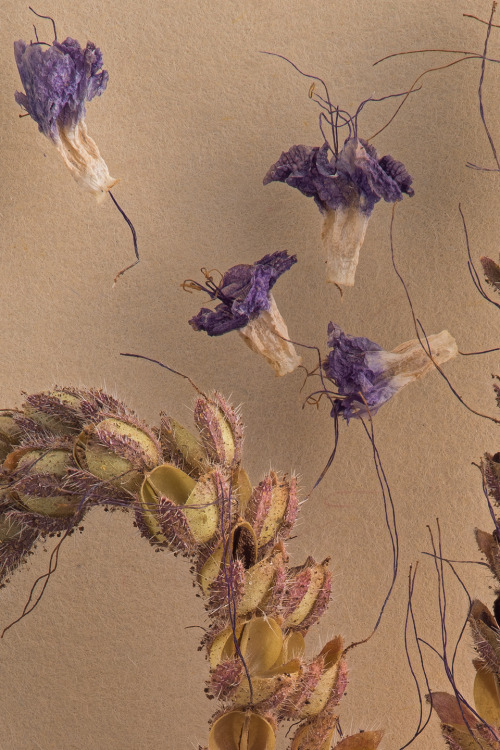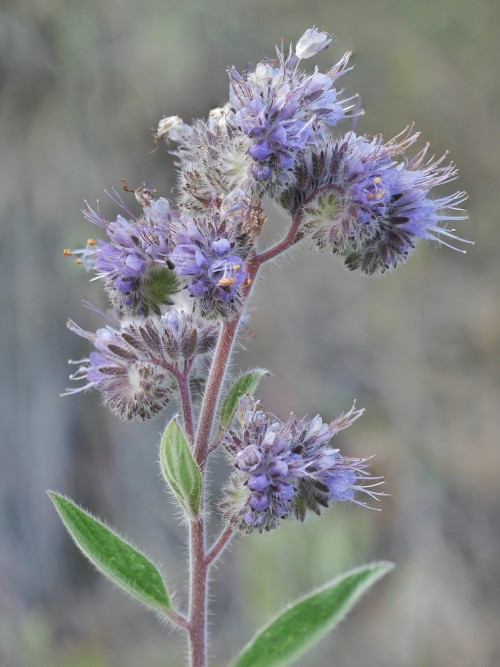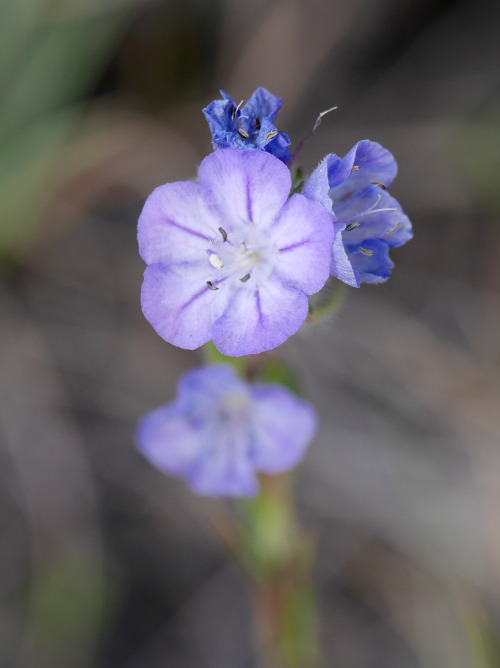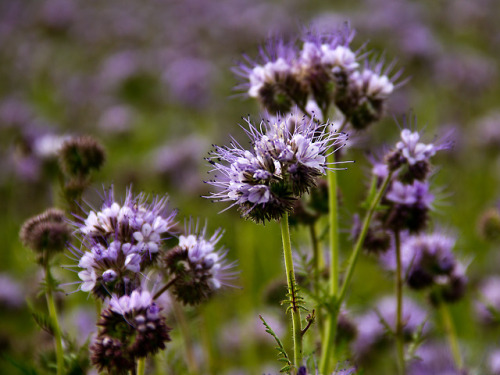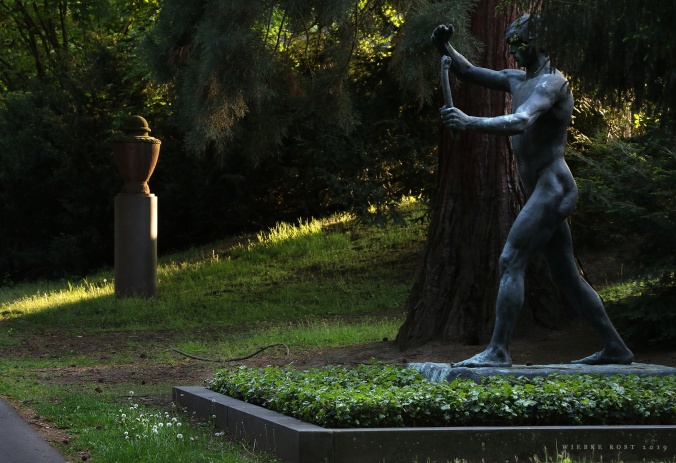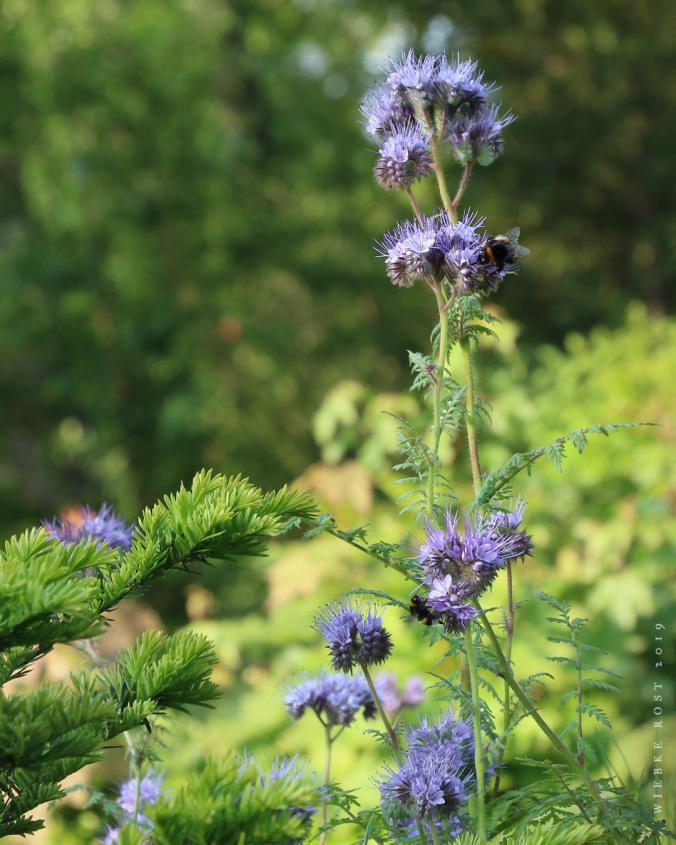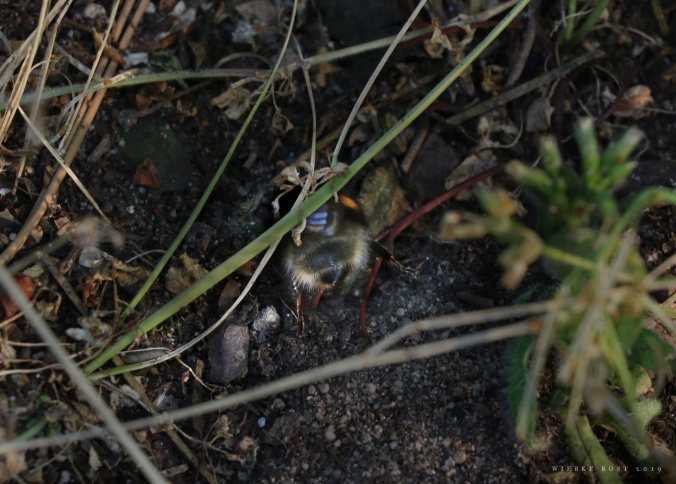#phacelia
Visiting Death Valley in 2021 was a disappointment compared to 2020, but there were some die-hard plants still flowering despite the dryness of the year. Phacelia crenulata was one of the few we saw, thriving at the edge of roads where the asphalt sheds water and can help keep it from evaporating as quickly.
Phacelia, AKA scorpionweeds for the curled inflorescences they grow, is native to North and South America though Phacelia tanacetifolia is making headway as an introduced species in Europe.
The scorpion-tail cymes of P. crenulata’s purple flowers mature into capsules full of orange-brown seeds which will hang out in the soil for as long as half a decade waiting for decent conditions to germinate and grow for a year – an endurance which may be necessary in the arid climates to which they are native. I took some seed heads home to photograph and grow, but so far I haven’t gotten them as large as they were growing even in that dry year!
Post link
Phacelia heterophylla “Varileaf Scorpionweed” Hydrophyllaceae/Boraginaceae
Mt. Sentinel, Lolo National Forest, MT
June 13, 2016
Robert Niese
As I mentioned in my last post, I’m not very familiar with members of the genus Phacelia, but this species perfectly exemplifies why they have received the common name, “scorpionweeds.” Those tightly coiled flower heads will progressively unravel until they’re long and straight (a very Boraginaceaous growth pattern). P. heterophylla is an abundant, weedy species in our area, and, unlike elsewhere in its range where their flowers are drab and white, here in Missoula ours tend to be deep lavender in color!
Post link
Phacelia linearis “Thread-leaf Phacelia” Hydrophyllaceae/Boraginaceae
Mt. Sentinel, Lolo National Forest, MT
June 13, 2016
Robert Niese
I can’t say I’m particularly familiar with the genus Phacelia. In fact, I was quite stumped when I first photographed this flower on the trails behind the university. Turns out, Phaceliahas perplexed botanists as well over the last few decades as well. Most members of this genus are called scorpionweeds (for obvious reasons which I’ll elucidate in my next post), but this particular species is definitely not recognizable as such. Its large, broadly campanulate flowers are not what I immediately associate with members of Hydrophyllaceae either. What’s more, the family Hydrophyllaceae is now accepted as a subfamily within Boraginaceae, and this plant absolutely does not remind me of forget-me-notsandbluebells. So in summary, the Thread-leaf Phacelia is an oddball in the world of Phacelias and the genus Phaceliais generally also odd as a member of Hydrophyllaceae which, oddly enough, has odd traits that do not conform to those that tend to be most common in the family Boraginaceae, to which it now belongs.
Post link


4.13.21 - Desert phacelia, Phacelia campanularia


4.12.21 - Did some weeding at a friend’s native garden yesterday! Feat. Phacelia tanacetifolia, which the bees were absolutely loving
May 7th, 2019, Nordfriedhof Düsseldorf
Nordfriedhof Düsseldorf May 7th, 2019, Nordfriedhof Düsseldorf

